In today’s competitive marketplace, businesses are constantly striving to differentiate themselves and attract loyal customers. One effective strategy employed by many companies is the implementation of satisfaction guarantees, promising consumers peace of mind and confidence in their purchases. These guarantees serve as a testament to a company’s commitment to quality, customer service, and overall customer satisfaction.
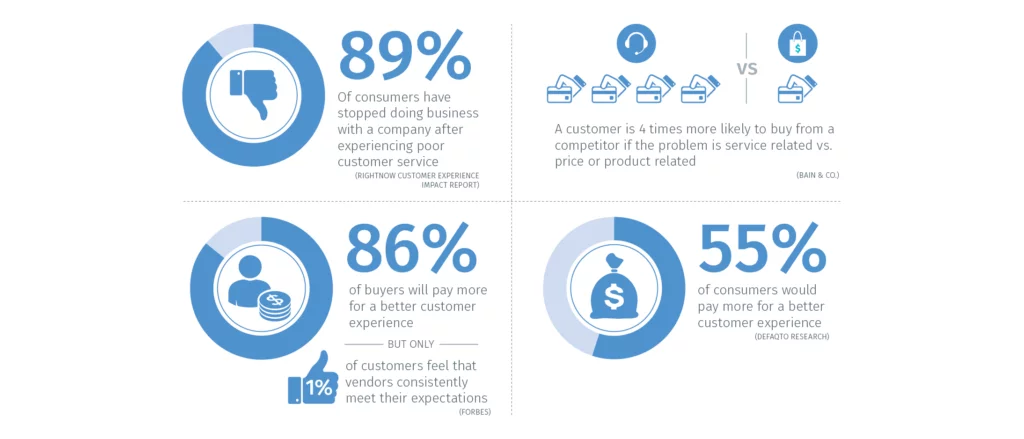
According to recent statistics, satisfaction guarantees have become increasingly prevalent across various industries:
- Global Adoption: A survey conducted by the Better Business Bureau found that 81% of businesses worldwide offer some form of satisfaction guarantee to their customers.
- Consumer Expectations: A study by Zendesk revealed that 76% of consumers expect companies to offer some form of guarantee or warranty for their products or services.
- Impact on Purchasing Decisions: Research conducted by the Harvard Business Review found that 70% of consumers are more likely to purchase from a company that offers a satisfaction guarantee.
- Retention and Loyalty: According to Bain & Company, increasing customer retention rates by just 5% can lead to a profit increase of 25% to 95%. Satisfaction guarantees play a vital role in fostering customer loyalty and repeat business.
- Refund Requests: Despite the prevalence of satisfaction guarantees, only 27% of consumers actually take advantage of them, according to a study by Narvar. This suggests that while guarantees are offered widely, not all customers feel the need to invoke them.
What is a Satisfaction Guarantee?
A satisfaction guarantee serves as a powerful tool for businesses to instill trust and confidence in their products or services. By offering assurance of a refund or return if a customer’s expectations are not met within a specified period, businesses can foster stronger relationships with their target audience and enhance their brand reputation.
Key Benefits of a Satisfaction Guarantee:
- Enhanced Customer Confidence: Providing a satisfaction guarantee reassures customers that their satisfaction is a top priority for the business, encouraging them to make purchases with confidence.
- Risk Mitigation for Customers: It reduces the perceived risk for customers, who may be hesitant to try new products or services without a guarantee of quality or satisfaction.
- Market Insight and Feedback: A satisfaction guarantee enables businesses to gain valuable insights into customer preferences and satisfaction levels, helping them better understand their target market and refine their offerings accordingly.
- Brand Image and Trustworthiness: Building a reputation for reliability and customer-centricity strengthens the brand image and fosters trust among both existing and potential customers.
Types of Satisfaction Guarantees:
- Money-Back Guarantee: This is the most common type of satisfaction guarantee, where customers are offered a full or partial refund if they are not satisfied with their purchase within a specified timeframe.
- Satisfaction Promise: Businesses promise to rectify any issues or concerns raised by customers, whether through product replacement, exchange, or complimentary services, to ensure their satisfaction.
- Lifetime Guarantee: Some businesses offer a lifetime satisfaction guarantee, demonstrating their confidence in the quality and longevity of their products or services.
- Trial Period: Customers are given a designated trial period during which they can test the product or service risk-free. If they are not satisfied within this period, they can return it for a refund or exchange.
Approaches to Real Life Implementation of Satisfaction Guarantee:
1. The Money-Back Guarantee: A Detailed Overview
The money-back guarantee stands as one of the most ubiquitous forms of satisfaction guarantee employed by businesses of all sizes across various industries. This policy offers customers the assurance that they can request a refund if they are dissatisfied with a product or service within a specified timeframe.
Advantages:
- Builds Customer Confidence: Demonstrates confidence in the quality of products or services, enhancing customer trust and loyalty.
- Competitive Edge: Sets businesses apart from competitors and attracts hesitant customers who value risk-free purchases.
- Positive Brand Image: Reflects a customer-centric approach and commitment to satisfaction, fostering positive brand perception.
Disadvantages:
- Potential Abuse: Customers may attempt to exploit the guarantee by seeking refunds without legitimate reasons, leading to financial losses for the business.
- Operational Challenges: Managing refund requests and processing returns can be time-consuming and resource-intensive for businesses, impacting operational efficiency.
Case Study: Adobe
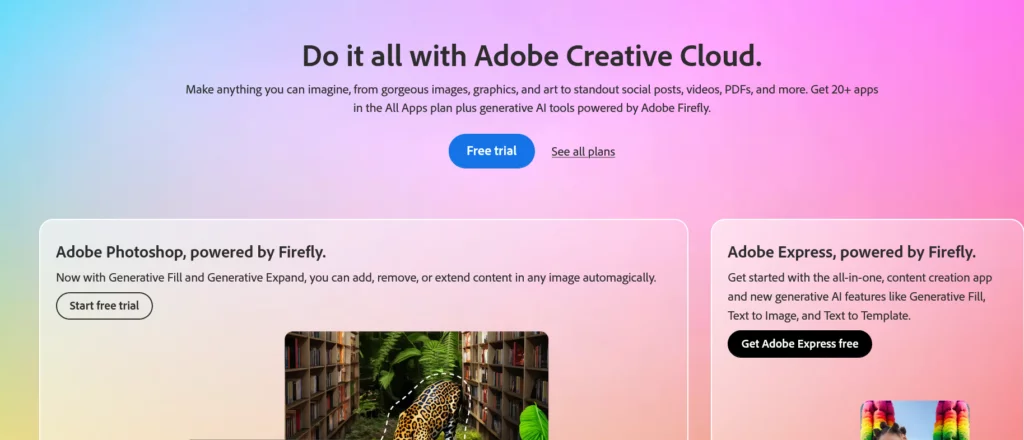
Adobe, a renowned computer software company, implements a money-back guarantee policy for its subscription-based services. Key considerations of Adobe’s policy include:
- 14-Day Rule: Customers are eligible for a refund within 14 days of the initial purchase, subject to certain terms and conditions.
- Country-Specific Variations: The money-back guarantee may vary based on the customer’s location and local regulations.
- Subscription and Cancellation Terms: Adobe provides clear guidelines for subscription management and cancellation processes, ensuring transparency and clarity for customers.
2. The Lowest Price Guarantee: Exploring the Concept
The lowest price guarantee is a competitive strategy employed by businesses to attract customers by offering assurance that their prices are the lowest in the industry. This guarantee pledges to match or beat any lower price offered by competitors, thereby instilling confidence in customers and incentivizing them to make purchases.
Advantages:
- Competitive Edge: Differentiates the business from competitors and attracts price-conscious customers seeking the best deals.
- Increased Sales: Encourages customers to choose the business over competitors due to the assurance of the lowest prices, resulting in higher sales volumes.
- Brand Loyalty: Builds trust and loyalty among customers who value cost-effectiveness and appreciate the transparency of pricing policies.
Disadvantages:
- Reduced Profit Margins: Maintaining consistently low prices may lead to lower profit margins for the business, impacting overall revenue and profitability.
- Price Wars: Competitors may respond to the lowest price guarantee by lowering their prices further, resulting in a downward spiral of price competition.
- Operational Challenges: Ensuring compliance with the lowest price guarantee requires effective monitoring of competitor pricing and timely adjustments to pricing strategies.
Case Study: Horeca
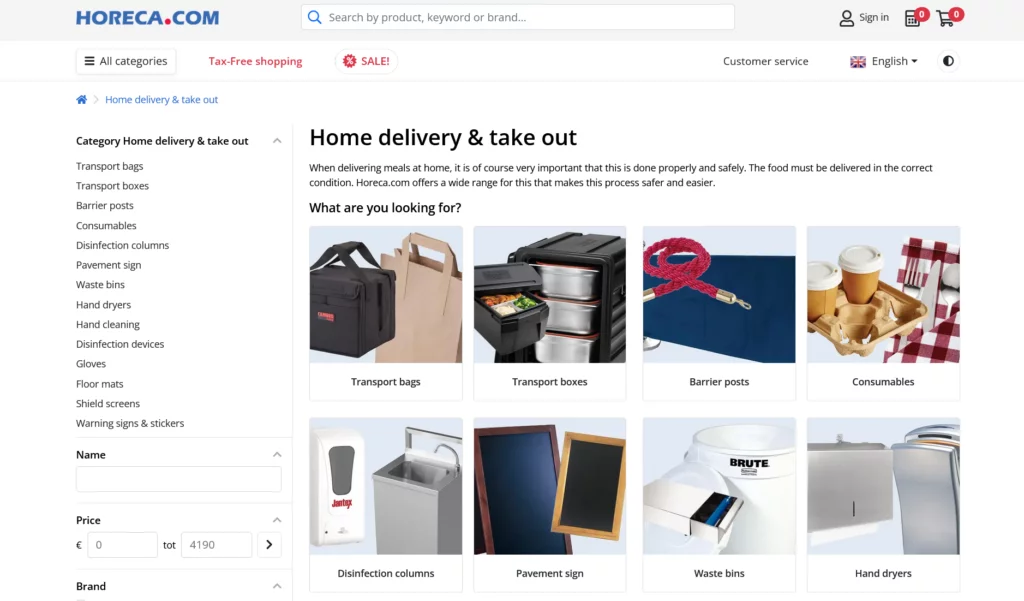
Horeca, a Netherlands-based company specializing in various products and equipment, implements a lowest price guarantee to attract customers and maintain a competitive edge. Key features of Horeca’s lowest price guarantee include:
- Wide Product Range: Horeca offers a diverse range of products, making it easier to claim the lowest price guarantee across multiple product categories.
- Assurance of Best Price: Horeca assures customers that they will receive the best price for products compared to competitors in the Netherlands.
- Clear Terms and Conditions: Horeca provides transparent guidelines for customers to claim the lowest price guarantee, ensuring clarity and confidence in pricing policies.
3. The Lifetime Guarantee: Ensuring Customer Confidence
The lifetime guarantee stands as a robust satisfaction guarantee utilized primarily by large-scale product companies. This guarantee assures customers that the product they purchase will be supported for its entire lifespan, fostering trust and loyalty.
Advantages:
- Enhanced Customer Trust: Builds trust and confidence among customers, who appreciate the brand’s commitment to standing behind its products for the long term.
- Competitive Advantage: Sets the brand apart from competitors and attracts customers seeking products with lifetime support and assurance.
- Long-Term Customer Relationships: Encourages repeat purchases and brand loyalty as customers feel valued and supported throughout the lifespan of the product.
Disadvantages:
- Potential Misuse: Customers may attempt to exploit the lifetime guarantee by seeking replacements or refunds for products that are no longer functional due to normal wear and tear.
- Operational Challenges: Managing lifetime guarantees can be complex and resource-intensive for businesses, requiring effective systems for tracking warranties and processing claims.
- Financial Implications: Offering lifetime guarantees may incur significant costs for product replacements or refunds, impacting profit margins and financial sustainability.
Case Study: Vermont Teddy Bear Company

Vermont Teddy Bear Company, a renowned manufacturer of teddy bears, exemplifies the implementation of a lifetime guarantee. Key features of Vermont Teddy Bear’s lifetime guarantee include:
- Comprehensive Coverage: Vermont Teddy Bear’s lifetime guarantee covers all aspects of the product, including washing instructions and customer service details.
- Brand Transparency: The company provides clear and detailed information about the lifetime guarantee, ensuring transparency and clarity for customers.
- Lifetime Replacement Policy: Customers are assured of receiving brand-new teddy bears throughout their lives, demonstrating the brand’s commitment to quality and customer satisfaction.
4. The Try-Before-You-Buy Guarantee: Explained in Detail
The try-before-you-buy guarantee, also known as the free trial guarantee, is a marketing strategy employed by businesses to allow customers to experience their products or services before making a purchase commitment. While similar to a free trial, this guarantee emphasizes the opportunity for customers to fully evaluate the product within a limited timeframe.
Advantages:
- Product Evaluation: Allows customers to test the product’s performance, usability, and compatibility with their needs before making a purchase decision.
- Reduced Risk: Minimizes the risk for customers by providing a risk-free trial period, fostering confidence and trust in the brand.
- Increased Conversions: Encourages customers to upgrade to paid plans or make purchases after experiencing the value and benefits of the product during the trial period.
Disadvantages:
- Potential Abuse: Customers may exploit the trial period by creating multiple accounts to extend the trial duration or by canceling subscriptions after the trial period without intending to make a purchase.
- Resource Intensive: Managing trial subscriptions and monitoring customer usage during the trial period can be resource-intensive for businesses, requiring effective systems for tracking and analysis.
Case Study: Strikingly
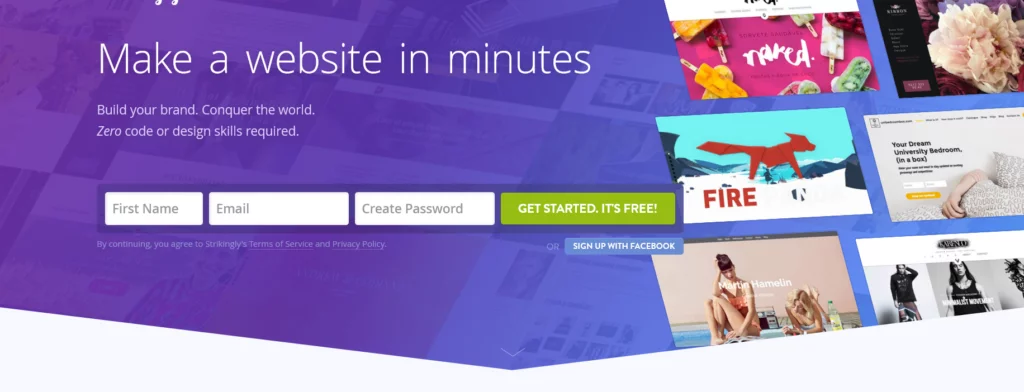
Strikingly, a website builder platform specializing in mobile-optimized features, offers a try-before-you-buy guarantee to its customers. Key features of Strikingly’s guarantee include:
- Pricing Plans: Customers can choose from various pricing plans offered by Strikingly, each with different features and capabilities.
- Limited Trial Period: Customers have up to 14 days to try the selected pricing plan before being charged.
- Cancellation Option: If customers are not fully satisfied with the features or performance during the trial period, they can cancel their subscription and receive a refund for the amount paid.
5. The Free-Forever Guarantee: A Detailed Exploration
The free-forever guarantee is a customer-centric satisfaction guarantee type that offers customers the opportunity to use a product or service indefinitely without any cost. This guarantee, often associated with a free plan offered by a brand, allows customers to experience the value and benefits of the product without any financial commitment. Let’s delve into the intricacies of the free-forever guarantee:
Advantages:
- Customer Acquisition: Attracts new customers by offering a risk-free opportunity to experience the product or service without any upfront costs.
- Brand Loyalty: Fosters loyalty and long-term relationships with customers who appreciate the value and benefits provided by the free plan.
- Competitive Advantage: Sets the brand apart from competitors and positions it as a customer-centric company committed to providing accessible solutions.
Disadvantages:
- Revenue Generation: The free-forever guarantee may limit revenue potential, especially if a significant portion of customers opt to remain on the free plan indefinitely.
- Resource Allocation: Providing ongoing support and maintenance for free users can be resource-intensive for businesses, requiring careful allocation of resources to balance the needs of both free and paid users.
- Customer Expectations: Customers may have high expectations for the free plan and demand additional features or support without understanding the associated costs or limitations.
Case Study: ClickUp

ClickUp, a comprehensive work management tool for teams and businesses, offers a free forever plan alongside its paid plans. Key features of ClickUp’s free forever guarantee include:
- Accessible Features: ClickUp’s free forever plan provides access to essential features and functionalities, allowing users to manage tasks, projects, and collaboration without any cost.
- Upgrade Options: While the free plan offers basic functionality, users have the option to upgrade to premium plans for access to advanced features, integrations, and support.
- Transparent Pricing: ClickUp clearly communicates the features and limitations of its free plan, ensuring transparency and clarity for users evaluating their options.
6. The First-Time Guarantee: A Comprehensive Insight
Embarking on a new experience or endeavor can be daunting, which is why the first-time guarantee, also referred to as the initial guarantee, holds significant importance. This guarantee serves as a commitment from brands to ensure a positive and supportive experience for customers venturing into something new.
Advantages:
- Building Trust: Establishes trust and credibility with customers by demonstrating the brand’s commitment to ensuring a positive experience, particularly for first-time users.
- Encouraging Exploration: Encourages customers to explore new products or services with confidence, knowing that they are supported and protected by the brand’s guarantee.
- Competitive Differentiation: Sets the brand apart from competitors by offering a unique and supportive guarantee tailored to the needs of new customers.
Disadvantages:
- Limited Applicability: Not every brand or industry may be suitable for implementing a first-time guarantee, as it depends on the nature of the products or services offered and the target audience.
- Potential Abuse: There is a risk of customers exploiting the guarantee for personal gain, such as seeking refunds or compensation without genuine cause, leading to potential financial losses for the brand.
- Resource Allocation: Providing support and refunds for first-time users may require additional resources and manpower, necessitating careful resource allocation and management.
Case Study: Kingsley Pines
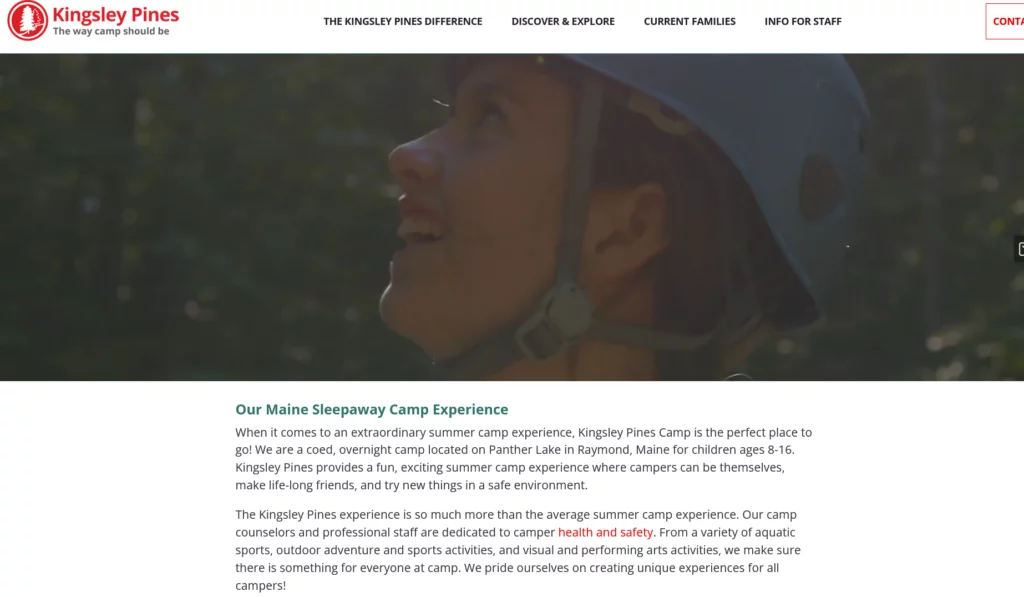
Kingsley Pines, a provider of camping experiences for beginners, families, and individuals of all ages, offers a First-Time Camper Guarantee to instill confidence in new campers. Key features of Kingsley Pines’ first-time guarantee include:
- Assurance of Experience: Kingsley Pines openly guarantees children’s enjoyment and satisfaction during their first camping experience, ensuring a positive and memorable adventure.
- Refund Options: The brand offers refunds for specific days or situations to accommodate unforeseen circumstances or challenges encountered by first-time campers.
- Commitment to Support: Kingsley Pines is committed to providing support and assistance to first-time campers, ensuring that their experience is enjoyable and stress-free.
7. The Reliability Guarantee: Ensuring Trust and Confidence
The reliability guarantee is a powerful satisfaction guarantee technique favored by many leading companies. In an increasingly competitive marketplace, establishing reliability is paramount to gaining the trust and confidence of customers. Let’s delve into the intricacies of the reliability guarantee:
Advantages:
- Trust and Confidence: Establishes trust and confidence in the brand by demonstrating its commitment to reliability and consistency in delivering high-quality products or services.
- Competitive Edge: Sets the brand apart from competitors by showcasing its reliability and credibility, thereby attracting customers who prioritize trust and dependability.
- Enhanced Reputation: A strong reputation for reliability can lead to positive word-of-mouth referrals and repeat business, further solidifying the brand’s position in the market.
Disadvantages:
- Initial Challenges: Building credibility and trust, especially for new brands entering established industries, can be challenging and require significant time and effort.
- Resource Intensive: Implementing measures to demonstrate reliability, such as obtaining patents or collecting social proof testimonials, may require additional resources and investment.
- Potential Risks: Despite efforts to establish reliability, there is always a risk of unforeseen issues or incidents that could impact customer perceptions and trust in the brand.
Case Study: Dynabook

Dynabook, a renowned computer company, leverages the reliability guarantee to reassure customers of the quality and dependability of its products. Key features of Dynabook’s reliability guarantee include:
- Transparent Terms: Dynabook’s reliability guarantee is clearly outlined in its Terms, providing customers with a comprehensive understanding of the brand’s commitment to reliability.
- Reasons and Consequences: The reliability guarantee details the reasons behind Dynabook’s reliability and the potential consequences for customers, reinforcing the brand’s accountability and dedication to excellence.
- Logo of Reliability: By prominently featuring the logo of reliability at the top of the page, Dynabook effectively communicates its commitment to delivering trustworthy products and services.
8. The Best Price/Perfect Fit Guarantee: Striving for Value and Affordability
In today’s competitive market landscape, claiming to offer the best price or the perfect fit for customers’ needs is a common assertion made by businesses across various industries.
Advantages:
- Customer-Centric Approach: Demonstrates a commitment to meeting customers’ needs by offering competitive pricing and value-driven solutions tailored to their requirements.
- Competitive Edge: Sets the brand apart from competitors by positioning itself as the go-to choice for customers seeking the best combination of price and features.
- Enhanced Customer Loyalty: By consistently delivering on its promise of affordability and value, the brand can foster long-term customer loyalty and retention.
Disadvantages:
- Price Sensitivity: Customers may prioritize price over other factors, leading to increased price sensitivity and the need for continual price adjustments to remain competitive.
- Margin Pressures: Maintaining profitability while offering the Best Price/Perfect Fit Guarantee may pose challenges, especially if competitors engage in price wars or aggressive discounting.
- Perceived Value: Despite offering competitive prices, customers may perceive the brand’s products or services as lacking in value compared to higher-priced alternatives.
Case Study: Popupsmart
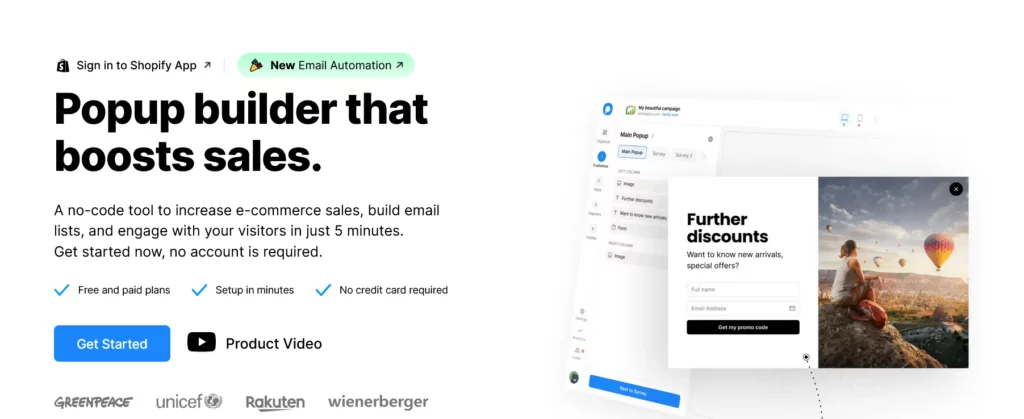
Popupsmart, a leading popup builder known for its affordability and performance, offers the Perfect Fit Guarantee to customers seeking cost-effective solutions tailored to their needs. Key features of Popupsmart’s Perfect Fit Guarantee include:
- Affordable Pricing: Popupsmart ensures that its pricing plans are competitively priced, offering customers exceptional value for their money without compromising on quality.
- Seasonal Discounts: To further enhance affordability, Popupsmart periodically offers discounts and promotions, allowing customers to enjoy even greater savings on their purchases.
- Transparent Guarantee: Popupsmart prominently displays its Perfect Fit Guarantee on its homepage, reassuring customers of its commitment to delivering the best price-performance ratio in the market.
Reinforce trust in your business with customer reviews.
Keep Your Customers Engaged with Satisfaction Guarantees
Satisfaction guarantees are a powerful tool for retaining customers, but their effectiveness hinges on whether visitors are aware of them. If potential customers don’t reach the checkout or miss your guarantee offer, you risk losing their trust and business. This is where popups come in handy, serving as a proactive way to inform visitors about your satisfaction guarantees.
A. Leveraging Popups for Customer Engagement:
Popups can be strategically placed on your website to highlight your satisfaction guarantees, ensuring maximum visibility and impact. Here’s how they can help:
- Informative Alerts: Popups can grab visitors’ attention and provide essential information about your satisfaction guarantees, ensuring they don’t miss out on this crucial aspect of your offerings.
- Promotional Opportunities: By incorporating satisfaction guarantees into popups, you can simultaneously promote your products or services while assuring customers of their satisfaction, making it a win-win scenario.
- Visibility Boost: Placing satisfaction guarantees in popups ensures they are prominently displayed and not buried within your website’s content, increasing the likelihood of visitors noticing them.
B. Integrating Satisfaction Guarantees:
Consider incorporating satisfaction guarantees into the following areas of your website for maximum impact:
- Product Pages: Display satisfaction guarantees alongside product descriptions to reassure potential customers about the quality and reliability of your offerings.
- Checkout Process: Incorporate satisfaction guarantees into the checkout process to alleviate any last-minute doubts or concerns customers may have before completing their purchase.
- Return and Refund Policy Page: Ensure your return and refund policy page is easily accessible and prominently features your satisfaction guarantees, providing customers with peace of mind regarding their purchase decisions.
C. Addressing Common Questions:
As you implement satisfaction guarantees on your website, consider addressing frequently asked questions to provide clarity and transparency:
- Choosing the Right Guarantee: Carefully consider the terms and conditions of your satisfaction guarantees to maintain your brand’s reputation and credibility.
- Displaying Guarantees: Strategically showcase satisfaction guarantees across your website to ensure maximum visibility and effectiveness.
- Importance of Guarantees: Satisfaction guarantees play a crucial role in attracting potential customers by instilling confidence and trust in your brand and its offerings.
- Target Audience: Tailor your satisfaction guarantees to meet the needs and expectations of your target audience, fostering stronger customer relationships.
- Not a Mandatory Requirement: While satisfaction guarantees can enhance your brand’s appeal, they are not mandatory for every business and should be implemented based on individual strategies and goals.
Conclusion:
In conclusion, satisfaction guarantees are invaluable tools for fostering customer loyalty and trust. By leveraging popups and strategic placement across your website, you can effectively communicate your commitment to customer satisfaction. Remember to address common questions and concerns, prioritize customer needs, and uphold transparency and integrity in all interactions. By doing so, you can enhance your brand’s reputation and credibility while nurturing long-lasting customer relationships.
FAQs on Satisfaction Guarantees:
How can I take advantage of a satisfaction guarantee?
To take advantage of a satisfaction guarantee, customers typically need to contact the company’s customer service department and explain their issue or dissatisfaction. Depending on the policy, customers may be eligible for a refund, replacement, or other remedies to address their concerns.
Are there any limitations or exclusions to satisfaction guarantees?
Some satisfaction guarantees may have limitations or exclusions, such as specific time frames for returns or refunds, requirements for proof of purchase, or restrictions on certain products or services. It’s essential to review the terms and conditions of the satisfaction guarantee to understand its scope and any applicable limitations.
Is a satisfaction guarantee the same as a warranty?
While both a satisfaction guarantee and a warranty aim to provide assurances to customers, they differ in scope and coverage. A satisfaction guarantee focuses on ensuring customer satisfaction with the product or service, typically offering remedies such as refunds or replacements. In contrast, a warranty typically covers specific defects or malfunctions in the product or service and may include provisions for repair or replacement within a specified period.
What rights do consumers have under satisfaction guarantee policies?
Consumers have the right to expect that companies will fulfill their satisfaction guarantee promises and address any issues or dissatisfaction promptly and effectively. If a company fails to honor its satisfaction guarantee, consumers may have recourse through consumer protection laws or regulatory agencies to seek redress.



